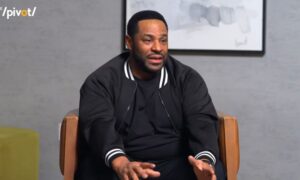By Matthew Marczi
When it comes to determining draft needs, it’s important to make a distinction in future projections of current talent between expectations and hopes. It’s very dangerous to make draft decisions based solely on your hopes for your current talent pool. Expectations are not always met, but they are certainly more assured than hopes.
In this case, expectations are realistic future speculations, whether that is regarding player development, longevity, rehabilitation, or contract negotiations. Hopes, on the other hand, are simply that: hopes. Desires based on little evidence and a great amount of faith.
The inside linebacker position is a good stable of players to serve as an example when it comes to the Pittsburgh Steelers, with one obvious example that sticks out immediately.
Anybody and everybody naturally hopes that Sean Spence will be able to play football again. However, it’s not a realistic expectation to take into consideration in an evaluation of the available talent at the position.
Even if Spence is able to take the field again this season—or ever, for that matter—there’s no assurance that he will be able to play at the level that was expected of him during his rookie preseason before he was injured.
In other words, the hypothetical return of Spence is not something a team should take into consideration when weighing their draft options against what talent they have on the roster at the inside linebacker position.
Then there is Vince Williams, a player for whom there is a litany of both hopes and expectations, primarily because there is still so much to learn about him, being that he is only going into his second season.
Williams is a player who participated on defense at a far greater capacity, both in terms of quality and quantity, than anticipated; he exceeded expectations as a rookie. Now what are the expectations for him as a second-year player?
What first must be determined is if he is the expected starter at the Buck linebacker position. The reason that he played was due to the injury to Larry Foote. With Foote expected to be back, the Steelers have to project who would best serve the team as the starter and go from there, assuming cap issues don’t come into effect.
One can realistically expect that a second-year player will be able to play with a greater level of comfort on a variety of levels. When it comes to specific areas of his game, it’s hard to say that improvement is anything but a hope.
For example, I wouldn’t call improvement in pass coverage an expectation for Williams, given his performance as well as his history. Likewise, I would be able to do nothing but hope that Shamarko Thomas’ height won’t limit his effectiveness on the field, outside of being careful to avoid matchup mismatches.
When it comes to Lawrence Timmons, I expect him to play better in 2014 than he did last year due to the instability that he was surrounded with, which I believe affected his game, including often playing as the sole inside linebacker. Next season, he will surely be paired with a familiar player, which wasn’t the case once Foote—the signal caller, no less—was lost for the year.
For Foote, one must hope not only that he is healed, but that he isn’t rusty after basically sitting out a year. A decline must be expected; after all, he was struggling already in the season opener last year against Tennessee’s pulling guards.
The Steeler hope that they have (at least) two quality starters at inside linebacker on their roster right now. But can they really claim that they expect it? After all, they spent much of last season taking Williams off the field, even eventually rotating him with Terence Garvin. Foote’s earlier decline will only be exacerbated now.
Just because the hopes may outweigh realistic expectations, however, doesn’t mean that you ignore the hopes. There’s still so much to learn about Williams, and if the Steelers, for example, bring in a rookie first round pick at the position, we may never know if Williams could turn into a long-term starter.
This past season, Jason Worilds nearly got lost in the shuffle to a similar fate before he emerged as one of the team’s best players in the second half of the season. Did Williams inspire enough hope last season to earn the organization’s faith that they don’t need to look for an immediate alternative?





